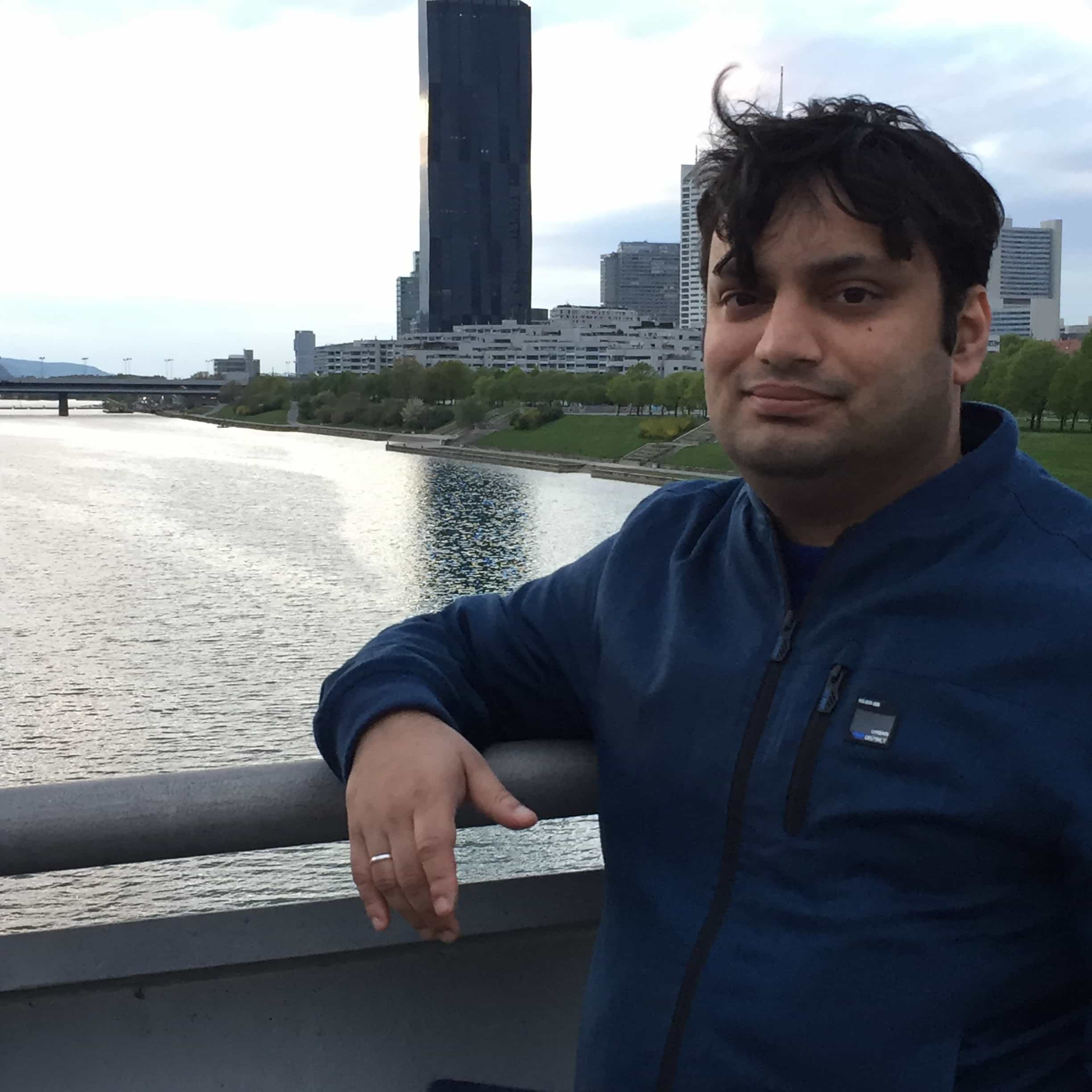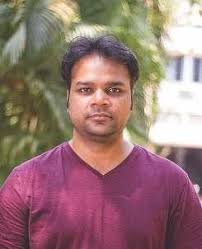Project
Exploring gravity from Planck length to cosmic scales
With the recent discovery of gravitational waves from merging binary black holes, the classical theory of gravitation is being probed to increasingly higher precision and greater strengths. It is also being simultaneously tested on the largest scales through observations of the distribution of matter in the universe. With improved observational techniques, it is expected that we would be able to probe the very early universe through the imprints of primary as well as secondary gravitational waves. It is hoped that these observations will provide us with some clues to the quantum nature of gravitation.
The goal of the Centre will be to pool together our efforts and connect theorists with various expertise and phenomenologists to examine whether we can systematically test the fundamental paradigms of classical and quantum theories of gravitation and understand our universe.
The key theme of our proposed Centre for Strings, Gravitation and Cosmology will be to explore the fundamental laws of physics from largest scales in the universe down to the smallest of scales dominated by quantum gravity, with the aim of deriving the imprints and possible relics of a quantum spacetime that can be tested using various upcoming observational missions in cosmology and gravitational wave physics. With expertise available within the group on a variety of closely related topics, during the course of the next few years, we intend to investigate in detail a range of interrelated issues in classical and quantum gravity as well as cosmology.
As we described earlier, our primary research goal will be to explore the fundamental laws of physics from the largest scales in the universe governed by classical gravity, down to the smallest scales dominated by quantum gravity. The aim of the Centre will be to pool together our efforts and connect theorists with various expertise and phenomenologists to examine whether we can systematically test the fundamental paradigms of classical and quantum theories of gravitation and understand our universe.
We intend to begin with the investigations in classical general relativity, through semi-classical and quantum gravity as well as cosmology and eventually examine ideas related to string theory. The specific problems we intend to investigate in this context are as follows:
- Probing extreme gravity and states of matter using GWs
- Developing an integrated view of the early universe
- Small scale structure of spacetime and non-locality
- Black hole and inflation in string theory
In what follows, we shall briefly describe these problems.
Modelling of compact binary mergers
- Detection or the subsequent analysis of a gravitational wave (GW) signal critically depends on how accurately we understand their forms.
- The exact shape of a GW signal depends on a number of source parameters and hence it is important that its theoretical predictions include all possible physical effects that, if neglected, can potentially bias the analysis or worse can even lead to non-detection of these signals.
- Over the next years, we intend to develop a coherent proscription for gravitational waveforms from compact binary mergers including effects of eccentricity, sub-dominant modes and component spins.
- These developments will be crucial in performing tests of general relativity, and help us distinguish between different formation channel scenarios
Probing exotic states of matter
- Gravitational waveforms carry distinct imprints of deformations of a component in the binary with matter (either due to its own spins or due to companion’s tidal field) and can be measured using their observations in future ground based detectors such as Einstein Telescope and Cosmic Explorer.
- While accurate measurements of the matter-induced tidal effects will provide unique probes into the neutron star equation of state, measurements of spin induced deformations will help identifying the exact nature of compact binary.
- Over the next years, we intend to carry out parameter estimation analyses focusing on measurements of spin-induced or matter-induced effects
Tests for a true theory of gravitation
- While general relativity has passed every test it has been put to so far (from weak gravitational fields outside of the sun to the strongest ones outside of black holes) most of these tests are null tests due to unavailability of reliable signal models in alternative gravity theories.
- Additionally, physical effects (if not modelled) such as eccentricity, presence of non-quadrupole modes, tidal and spin induced deformations can amount individually or together as departures from the true nature of gravity.
- In the coming years, we aim to perform tests of general relativity by employing signal models including the effect of physical effects such as orbital eccentricity, components and sub-dominant modes.
- Moreover, we aim to incorporate beyond GR effects (modified theories) into gravitational waveforms and use observations of gravitational waves to put constraints on a class of gravity theories
Discerning finer signatures of the inflationary potential at large scales
- While a suitably red-tilted primordial power spectrum has proved to be consistent with the cosmological data on large scales at more than 5-σ, it has often been noticed that specific features in the primordial scalar power spectrum improves the fit to the data. With exquisite CMB and large scale structure data set to be gathered over the nextdecade, it becomes imperative to examine the possibility of features on large scales.
- One of the primary and long terms goals of the proposal would be to examine the presence of features in the primordial spectra by, say, describing them parametrically and simultaneously constructing inflationary models that lead to them.
- It also becomes important to investigate the extent to which these features boost the amplitudes of the three-point auto and cross-correlation functions describing the scalars and tensors. Apart from helping us examine if these three-point functions are consistent with the present bounds, these efforts will also allow us to identify distinct observable signatures that can be searched for in the current and forthcoming data
Formation of primordial black holes (PBHs)
- Since the discovery of gravitational waves from merging binary black holes (BHs), there has emerged a great interest in examining whether these BHs could have originated in the primordial universe. One can construct inflationary models that lead to enhanced power on small scales which can result in significant production of PBHs. In such models, it seems possible that a substantial fraction of cold dark matter today could comprise of PBHs.
- However, one finds that the single field models that have been considered in the literature often require considerable amount of fine tuning and, hence, one may need to turn to multi-field models to achieve the desired amplification in power.
- Also, as the enhanced power on small scales can lead to substantial levels of non-Gaussianities, the challenge remains to understand the contributions due to to non-Gaussianities to PBH formation. We intend to work towards systematically taking into account the non-Gaussian contributions to PBH formation in single field as well as multi-field models of inflation.
Generation of secondary gravitational waves
- At the second order, the scalar perturbations can source the tensor perturbations.The amplitude of these secondary GWs can dominate those of the primary GWs when they are sourced by curvature perturbations with boosted power on small scales, such as in scenarios leading to increased formation of PBHs.
- These secondary GWs of increased strength can, in principle, be detected by current and forthcoming GW observatories such as, say, LIGO-Virgo, the Big Bang Observer and LISA. Moreover, apart from the secondary tensor power spectrum, the secondary tensor bispectrum that will be generated in such scenarios can possibly be observed by missions such as LISA.
- These bounds emerging from the extremely small scales is expected to provide a wide lever arm to arrive at strong constraints on the primordial power spectrum and thereby the inflationary potential. Our efforts will be aimed at developing codes to calculate the observables involving the tensor perturbations at small scales and utilize the constantly improving quality of data to arrive at increasingly tighter bounds on the primordial physics and, specifically, the inflationary potential.
Understanding the mechanism of reheating
At the end of inflation, the energy from the inflaton is expected to be transferred to the matter fields. The challenge remains to take into account all the various effects,including those due to gauge fields, to arrive at a comprehensive view of the reheating process.
Since the details of reheating seems essential to constrain inflationary dynamics, our efforts will be focused on identifying the distinct signatures of this epoch such as formation of PBHs due instabilities during preheating. We will also be examining whether the dynamics of gauge fields and the observables involving them will be affected during the process of reheating.
Small scale structure of spacetime
Two of the most important clues that the study of quantum field theory in curved spacetime has given in the last few decades are (i) existence of thermal effects associated with accelerated probes, and (ii) existence of an inherent lower bound in probing spacetime at very small scales, of the order of Planck length.
We propose to use these clues and develop new tools for quantum gravity based on geometric quantities of direct relevance from an observational point of view, and use the framework to explain how quantum spacetime may be re-constructed from more primitive non-local observables, collected over the past light cone of a typical observer.
Quantum fate of spacetime singularities
Classical general relativity predicts spacetime singularities in gravitational collapse to black holes and in early universe (Penrose and Hawking). Quantum fate of these singularities remains one of the most important open problems in theoretical physics, with implications for physics at all scales.
Non-locality of the quantum spacetime might remove these singularities while also yielding new information about their physical character. This, in turn, will also shed light on other open problems in gravitational physics such as: (i) Information loss in black hole evaporation, and (ii) Inflationary phase of the early universe. We propose to set-up a computational scheme where the effects of non-locality can be captures in an axiomatic manner independent of any specific theory of quantum gravity.
Cosmological constant and quantum spacetime
Observations reveal our universe to be in a state of accelerated expansion, the simplest explanation of which is the so called cosmological constant. The observationally deduced value of this constant has two features: (i) it is non-zero, and, (ii) it is tiny number. Standard quantum field theory can not explain either of these facts, which leaves our understanding of the major component of the observable universe incomplete.
It is possible that the observed value of the cosmological constant is a quantum relic arising due to some feature of spacetime at the smallest scales. We propose to investigate if the non-local nature of the quantum spacetime might leave a relic at large scales, thereby providing an explanation of for the the origin and nature of the cosmological constant.
Quantum black holes and the early Universe
Black holes in semiclassical gravity theories behave like blackbodies. A full quantum theory of gravity must precisely reproduce its entropy which was first postulated by Bekenstein and Hawking and later improved by Wald. Despite astounding successes, the understanding of black hole entropy remains one of the most thriving open directions in string theory opening up new discoveries in our understanding of the degrees of freedom of the theory. Furthermore, understanding the quantum nature of black holes and its possible signatures in gravitational waves is one of the most significant routes to finding experimental signatures of quantum gravity. A proper quantum theory needs to address the mechanism of resolving information paradoxes of black hole evaporation. The study of entropy and dynamics of quantum black holes is one of the main research directions of the center.
One can also hope that understanding of quantum black hole microstates would lead us to a similar understanding of the microstates of the early Universe. In that case, typicality should lead us to understand the generic statistical properties of the Universe that follows from a consistent cosmology admitting UV completion. This research direction to be pursued by the center is particularly exciting in view of the large amount of data that will be made available by upcoming experiments.
Understanding quantum black holes via string theory
- Hawking’s computation of radiation from black holes indicated that a classical black hole is essentially a black body with a macroscopic entropy which is a quarter of its horizon area measured in Planck units, as conjectured by Bekenstein. One of the biggest triumphs of string theory as a theory of quantum gravity is to precisely account for this entropy via counting of the microstates.
- Furthermore, in string theory, the fundamental strings stretch Einstein’s classical theory with higher curvature corrections while quantum fluctuations of spacetime give rise to additional terms that modify gravity at large distance scales. Wald and Sen have found out precisely how does such classical and quantum corrections to gravity modify the macroscopic formula of the Bekenstein-Hawking entropy.
- One of the most thriving areas of research is to uncover how the microscopic description of string theory can account for the classical and quantum corrections to the black hole entropy. This not only provides a rigorous consistency test of string theory but also allows us to discover many of its hidden unconventional symmetries with deep connections to number theory.
Information paradoxes and gravitational waves
Hawking’s result that black holes emit like a thermal blackbody indicated that unitarity is lost in any process where black holes are formed. This information loss paradox has been refined and sharpened in the new millennium using tools of quantum information theory while possible resolutions were found out. It is however not such mechanism scan be dynamically realized, especially how the black hole past its Page time can encode its own information in the most complex way while encoding information of infalling matter as rapidly as possible in the outgoing Hawking quanta.
We propose to study analogue quantum black hole models using microstates of string theory and explain how the semi-classical black hole spacetime emerges, how the interior is encoded in dual holographic descriptions while figuring out the how the mechanisms of resolution of information paradoxes are realized dynamically. This is expected to have a profound impact on quantum information theory also.
We also propose to understand how the microstate structure of black holes can leave their imprints on gravitational wave radiation, and whether the latter can reveal something about quantum gravity.
Microstates of the early universe
- String theory models of black hole microstates are very closely linked with models which can account for the microstates of the Universe when it was less than a Planck second old. We would be studying such models and try to unearth mechanisms which can explain the origin of inflation that gives rise to the approximately homogeneous and isotropic Universe along with a causal mechanism for the formation of structures we observe today.
- One of biggest debates today is whether we can rule out many apparently consistent low energy theories coupled to semi-classical gravity using some general principles which are necessary for their UV completion. This has lead to the so-called swampland program which tries to elucidate such conjectures, e.g. gravity should be the weakest force, etc that can put many apparently consistent theories in the swamp-land. However, this may not be enough to hunt for the real Universe in string theory.
- The microstate modelling of the early Universe may give rise to generic understanding of statistical properties consistent with the swampland conjectures, and lead us to deep predictions of how to connect string theory with the structure of the present Universe. It should also lead to a deeper understanding of the swampland program.
Expected deliverables of the research
Our investigations are essentially expected to help us gain a better understanding of the nature of gravitation both in the classical and the quantum regimes.
Since the project involves investigating fundamental aspects of physics, the deliverables will be primarily in the form of publications and talks. We intend to publish our findings in international journals and also present them at national and international conferences. We also plan to give seminars highlighting our results in institutions across India and abroad at regular intervals.
We should mention that some of our efforts will involve developing numerical codes. When they are complete, we expect to make the numerical codes we develop publicly available, as we have done with some of our earlier codes. In the process, we will also be developing manpower with strong expertise in these areas.
Current status
Collaborations
International collaborations
We are part of the International Research Network of Quantum Fields and Strings IRN-QFS which is funded by the CNRS involving many CNRS laboratories (LPENS Paris, LPTHE, UPMC -Paris) and partner institutions (Princeton, Harvard, Stanford universities in US, DAMTP Cambridge University, Imperial College London, etc of the UK, University of Amsterdam and many other universities and institutes in Europe). This network funds collaborative visits primarily.
Ayan Mukhopadhyay has a shared postdoc with Prof Giuseppe Policastro (LPENS, Ecole Normale Superieure Paris) via CEFIPRA funded project.
We should mention that, over the last year or so, L. Sriramkumar, his student H. V. Ragavendra and his post-doctoral fellow Pankaj Saha, have published the following papers with international collaborators:
- M. Braglia, D. K. Hazra, F. Finelli, G. F. Smoot, L. Sriramkumar and A. A. Starobinsky, Generating PBHs and small-scale GWs in two-field models of inflation, JCAP 2008, 001 (2020) [arXiv: 2005.02895 [astro-ph.CO]].
- M. Braglia, D. K. Hazra, L. Sriramkumar and F. Finelli, Generating primordial features at large scales in two field models of inflation, JCAP 2008, 025 (2020) [arXiv:2004.00672 [astro-ph.CO]].
- H. V. Ragavendra, P. Saha, L. Sriramkumar and J. Silk, Primordial black holes and secondary gravitational waves from ultraslow roll and punctuated inflation, Phys. Rev. D 103, 083510 (2021) [arXiv:2008.12202 [astro-ph.CO]].
- H. V. Ragavendra, L. Sriramkumar and J. Silk, Could PBHs and secondary GWs have originated from squeezed initial states?, JCAP 2105, 010 (2021) [arXiv:2011.09938 [astro-ph.C0]].
L. Sriramkumar expects to pursue such collaborations further in the near future.
International education programs, conferences/seminar/webinar links
- We plan to begin a series of lectures in honor of Prof. Subrahmanyan Chandrasekhar to be given by eminent physicists. The lectures will be on the interface between astrophysics, gravitation, cosmology and high energy physics and it will be held bi-annually. We will hold one of these bi-annual lectures around the date of Prof. Chandrasekhar’s birthday, which falls on October 19.
- We intend to conduct two schools during the years 2022-23 with lectures by international and national experts on research themes of current interest, and upto 40 participants from research groups within India.
- We have begun planning for a School on Black holes and Gravitational Waves. The main themes of this school will be: 1. Classical and quantum properties of black holes, 2. Observational aspects of black holes and 3. Gravitational radiation.
- We intend to conduct two workshops in the years 2022–23 immediately following the corresponding thematic schools, whose intended goal would be to provide technical tools to beginning researchers in various areas of current research. We aim to conduct one of the workshops on Black Holes and Gravitational Waves and another on Cosmology.
Societal impact
Since our work involves fundamental aspects of physics, we do not expect the work to have a direct impact on society. However, we find that, historically, topics such as Astronomy, Astrophysics, Gravitation and Cosmology have not been adequately represented in Tamilnadu. We intend to plan a greater level of outreach across colleges, universities and other institutions in Chennai as well as Tamilnadu. Apart from giving talks, we hope to organize and teach at Schools aimed at undergraduate and Master’s students on these topics. We should mention that some of us have already been giving talks and teaching at Schools (aimed at undergraduate and Master’s students) in Chennai and Tamilnadu.
Sustenance Statement
Since the work of the group is largely theoretical in nature, supported by numerical efforts and comparison with the data when available, the primary aim of the Centre is to enhance interactions and research collaborations at the national and the international level. We are already collaborating nationally and internationally. Some of us are also associates of research institutions within India. We expect to formalize these national and international interactions by applying for joint research projects. We should mention that some of us have already applied for/received funds for such collaborations and we are constantly looking to widen the collaborations.
We are also in the process of preparing a proposal to seek support for some special lectures and visitors through CSR funding





